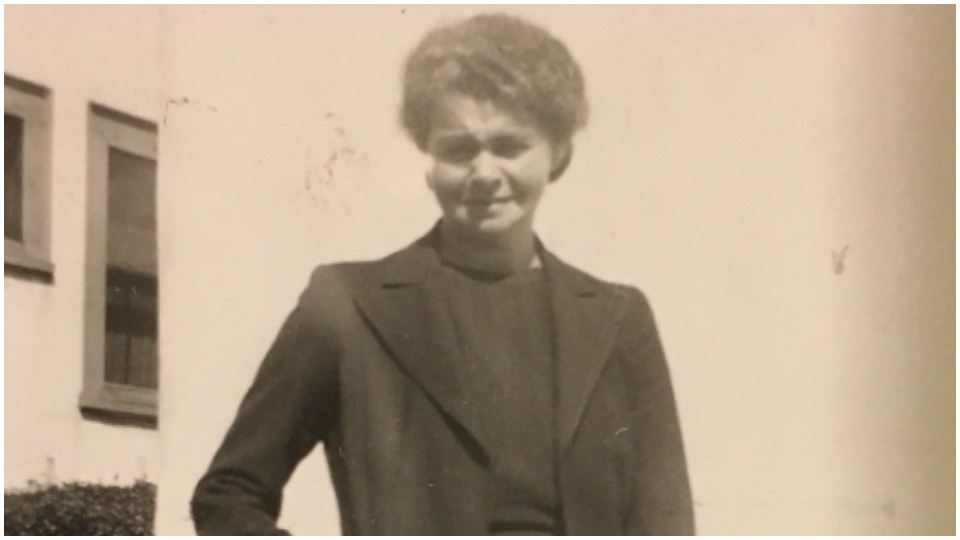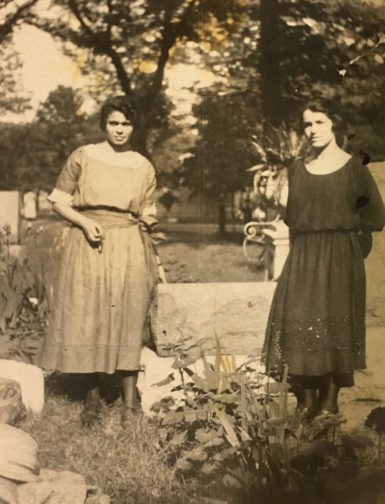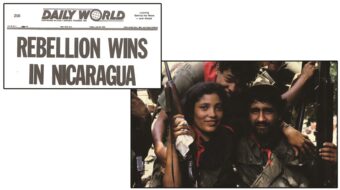
Editor’s note: Several weeks back I attended the memorial for an old friend of mine, August Maymudes (1930-2018), who had been a member of the Communist Party USA for some years. His father Abraham (1901-1989) had been chair of the Jewish Fraternal Order of the International Workers Order and was the West Coast correspondent for the Communist Yiddish newspaper Morgn Frayhayt (Morning Freedom). Augie was a professional pharmacist and a person of some influence among the former Communist Party members in the Los Angeles Jewish community. I reached out to him as part of my effort in the late 1990s to heal the breach between the “Old Left,” the Workmen’s Circle-Arbeter Ring (the socialist left), and the “New Left” generation that I represented as I became Southern California Director of WC-AR. An oral history with August Maymudes can be found here.
Augie’s memorial attracted around 50 people and when I spoke, I identified myself as retired from WC-AR and now working as a writer for People’s World. Afterward I was approached by Lee Saltz, who told me about her own family history with the paper, and I wondered if she would write that up for us. What she submitted was so pithily evocative, of people and times and movements, that it was almost poetry. With her permission I re-cast her sentences into the following. —Eric A. Gordon
We met at Augie’s memorial.
I told you a story
about my mother in Russia.
You asked me to write the story
and send it to People’s World.
I did some research to make sure
that the story was correct.
I am not a writer.
My mother, Clara Labovsky,
was born in 1893 in Narovlia,
a shtetele not far from Kiev,
Ukraine, part of Russia.
They were very poor.
She was about 13 years old
when a pogrom came to her village.
After the pogrom she cursed the Czar.
Her mother, an Orthodox Jew, said to her,
“Don’t curse the Czar, it could be worse.”
But Clara felt that nothing could be worse
and decided
to leave her village, go to another close-by village,
to listen to lectures
about how to bring equality to all people.
Marxism.
She got a job as a bagel maker
and lived with another family.
She went to hear a 19-year-old woman
named Genya Gorelick.
Genya was an orator
who traveled throughout Russia,
spoke in Yiddish,
rallied crowds with her fiery eloquence
and inspired them with her dedication to Marxism.
She supported the 1905 Revolution
and was a leader in the Bund.

For my mother
this was the beginning
of her political education and activism.
She came to America at the age of 17,
settled in Chicago, where she lived
with one or another of her siblings
and became a hand finisher in the garment industry.
She joined the IWW
and became active in the Garment Workers’ Union.
In 1929 she came to Los Angeles.
She continued her activism
in the ILGWU and other organizations.
She joined the Communist Party,
her religion until the day she died
in the fullness of age
from Narovlia to L.A.
at 78 years of life.
Genya Gorelick was Al Richmond’s mother.
He was the editor of the West Coast People’s World.
Leanore (Lee) Kasten Saltz’s activism started in the womb, where her mother, an immigrant union organizer, inculcated Leanore with the mantra to “make the world a better place for all people.” She grew up in East L.A.’s Boyle Heights surrounded by classical music, poetry, political movements and Yiddish culture. She became a teacher with expertise in addiction issues, bullying, and responsible sexual behavior, and a nonprofit volunteer for children’s health and libraries. She is married to Dr. Arthur Saltz, has two daughters and three cherished grandchildren.












Comments